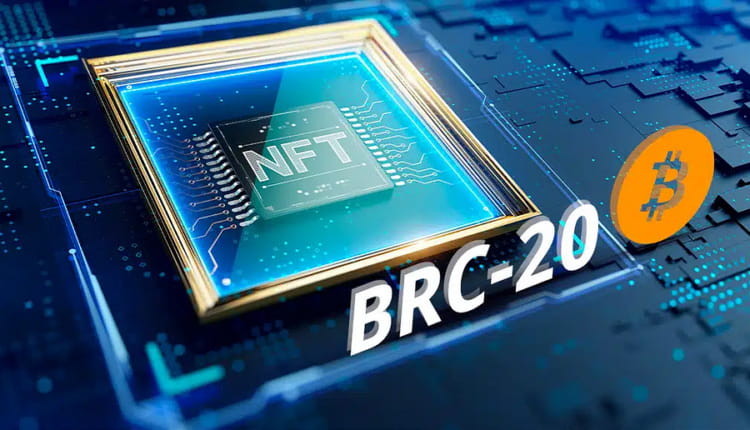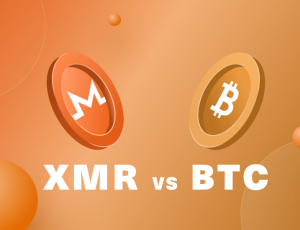The recent surge in excitement surrounding BRC20 tokens and NFTs has reignited the debate on whether Bitcoin’s block size should be increased to accommodate these and future use cases. It is worth noting that attempts to increase Bitcoin’s block size were made by institutions back in 2017 but were ultimately unsuccessful. The emergence of Bitcoin forks due to the original block size debate has raised suspicions that certain communities intentionally spammed the Bitcoin blockchain to prove a point. While circumstantial evidence supports this claim, it is important to acknowledge that alternative Bitcoin blockchains gained popularity during the time when the original Bitcoin blockchain became unusable. Regardless of the intent behind these actions, the debate on the utility of the Bitcoin blockchain and its potential expansion beyond simple BTC transactions has garnered significant attention.
The Utility of Layer 2 Networks:
The growing consensus among experts is that certain types of transactions are better suited for layer 2 networks like the Lightning Network. This alternative network experienced a surge in activity as the Bitcoin blockchain became bloated. The migration to layer 2 networks by users and Bitcoin forks alike suggests that these networks provide a more efficient solution for processing transactions. The Lightning Network’s increased adoption demonstrates its potential to handle the demands of complex use cases, offering scalability and faster transactions. More information on the Lightning Network can be found in the description section of this article.
The Impact of Blockchain Bloat on Bitcoin:
Bitcoin’s recent blockchain bloat raises questions about the implications for BTC itself. Higher Bitcoin fees incentivize more miners to join the network, thereby enhancing its security. However, this increase in fees also results in many users being priced out of transactions. The exorbitant gas fees experienced during periods of congestion have caused frustration among users and led to the exploration of alternative solutions to mitigate scalability challenges. It is crucial to strike a balance between network security and accessibility to ensure Bitcoin’s widespread adoption and functionality.
The Scalability Debate:
The debate on Bitcoin’s scalability is multifaceted, encompassing technical, economic, and philosophical considerations. Proponents of increasing the block size argue that a larger capacity is necessary to accommodate the growing demands of a expanding ecosystem, including BRC20 tokens and NFTs. They believe that a more spacious blockchain would promote efficiency and reduce congestion. However, opponents argue that increasing the block size compromises decentralization, as it requires more resources to validate and store larger blocks, potentially excluding smaller participants from participating in the network.
Finding Solutions:
To address the scalability challenge, ongoing research and development are focused on layer 2 solutions, such as the Lightning Network, that facilitate off-chain transactions and reduce the strain on the main blockchain. These layer 2 networks offer the potential for increased transaction throughput, lower fees, and faster confirmation times. Additionally, advancements in technologies like Segregated Witness (SegWit) have improved the efficiency of Bitcoin transactions by reducing their size and optimizing block space.
The recent blockchain bloat experienced by Bitcoin has brought the scalability debate back into the spotlight. While the intentional spamming of the Bitcoin blockchain remains a subject of speculation, it underscores the need to explore alternative solutions for processing transactions beyond the main blockchain. Layer 2 networks, like the Lightning Network, provide a promising avenue for scalability, enabling faster and more cost-effective transactions. Balancing network security, decentralization, and accessibility will be critical as the Bitcoin ecosystem continues to evolve. With ongoing research and technological advancements, the crypto community strives to find scalable solutions that ensure the long-term viability and usability of Bitcoin as a global currency.
Moving forward, it is essential for the Bitcoin community to engage in constructive discussions about the most effective approaches to address scalability concerns. Finding a consensus on scaling solutions is crucial to maintain Bitcoin’s relevance in a rapidly evolving digital landscape.
One potential path to scalability lies in the implementation of second-layer solutions like the Lightning Network. By leveraging payment channels and off-chain transactions, the Lightning Network aims to alleviate congestion on the main blockchain while facilitating near-instantaneous and low-cost transactions. The growing adoption and development of the Lightning Network demonstrate its potential to address the scalability challenges faced by Bitcoin.
Moreover, technological advancements such as Segregated Witness (SegWit) have played a significant role in optimizing transaction efficiency and reducing block congestion. By separating signature data from transaction data, SegWit effectively reduces the size of transactions, allowing more transactions to be included in each block. This not only enhances scalability but also improves the overall transaction experience for Bitcoin users.
However, it is important to note that scaling Bitcoin is not solely a technical issue. It also involves economic and philosophical considerations. As the network expands, striking a balance between decentralization and scalability becomes paramount. Preserving the decentralized nature of Bitcoin ensures that it remains resistant to censorship and control by a single entity. At the same time, scalability is crucial to accommodate the increasing demand for transactions and the evolving use cases within the cryptocurrency ecosystem.
To navigate these complexities, ongoing research and collaboration among developers, economists, and the wider Bitcoin community are essential. The exploration of innovative solutions, rigorous testing, and thorough analysis of potential trade-offs are key to finding the optimal balance between scalability and decentralization.
Conclusion:
In conclusion, Bitcoin’s recent blockchain bloat has reignited the debate on scalability and the necessity of expanding the block size. The emergence of layer 2 solutions like the Lightning Network presents promising avenues for addressing scalability challenges, offering faster and more cost-effective transactions. However, finding the right balance between scalability and decentralization remains a complex task that requires ongoing research, collaboration, and a commitment to the long-term viability of Bitcoin as a global digital currency. By actively engaging in these discussions and fostering innovation, the Bitcoin community can shape the future of the cryptocurrency and ensure its continued relevance in an ever-changing landscape.




